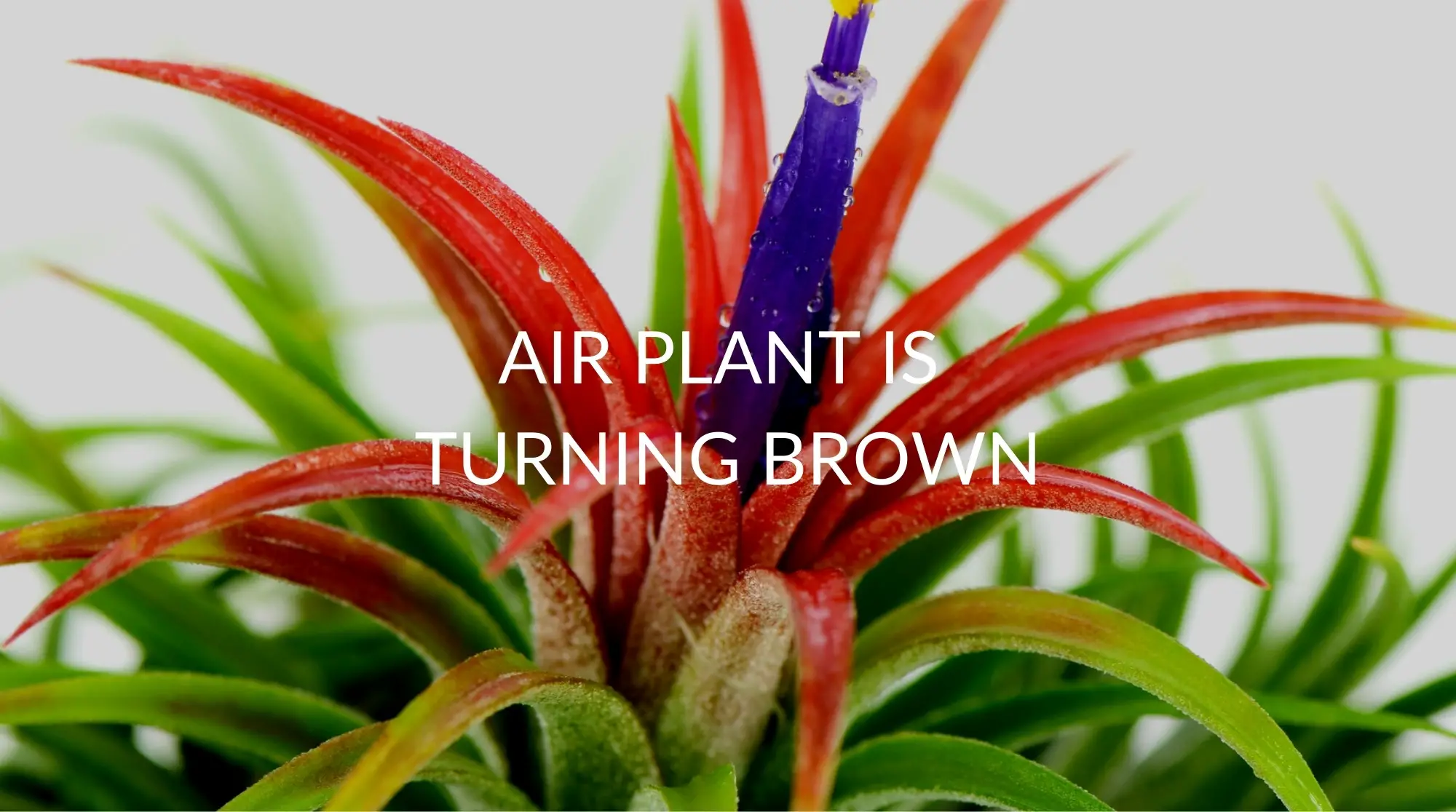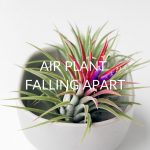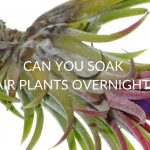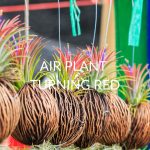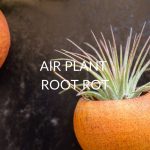Browning leaf tips in air plants are ubiquitous, which may be due to specific species’ physical characteristics, leaves getting sunburned, or not enough watering.
The leaf tips of air plants are very often susceptible to browning, especially those with delicate, wispy leaves like T. Fuchsii v Gracilis or T. Ionantha. Slight browning of leaf tips is typical in air plants, especially when placed in a new environment.
So we can also take it as an indication of plants’ trials to adjust in the environment because if plants are under any stress conditions, they show it off through their brown leaf tips.
This article will share some of the most common facts that make air plants turn brown, how you can prevent air plants from turning brown, and how you revive a brown air plant.
Why Are My Air Plants Turning Crispy and Brown?
Your air plants are turning brown due to any of the reasons stated below:
- Overexposure to Sunlight
- Deficiency of enough water.
- Deficiency of nutrients.
- Pest attack.
- Overfertilization.
- Poor air circulation.
Overexposure to Sunlight
If your plant is more exposed to sunlight, it is more prone to brown leaves and will get sunburned. On the other hand, air plants grow well in filtered sunlight.
If your air plants are more exposed to direct sunlight, they may get brown and crispy because some air plants do not require sunlight more than a specific limit. If such plants are kept under sunlight for a long time, they may lose their turgidity and get crispy and brown.
Here are other reasons why your Air plant is falling apart.
Underwatering
A dried-out or browning plant is usually a sign that your air plant requires watering immediately. Wild air plants fulfill the water need from rain and humidity in the air. Still, the weekly water supply is the key to the proper growth of home air plants.
In some areas, the air is very dry and has less humidity in the air or has less rain, so they can become brown due to the deficiency of water.
So proper watering is beneficial for the growth of these plants.
If you do not provide enough water routinely to your air plants, the leaves of your air plants may get brown. There is a common misconception that air plants do not require water or require the least amount of it. But that’s not true.
They need to be watered after every week. You also have to make sure that the excess water is shaken out to prevent it from any rots.
Nutrient Deficiency
A deficient supply of nutrients such as fertilizers can cause your plant to turn crispy and brown.
Occasionally, you notice the color of your healthy green air plant starts to convert into yellow and eventually brown color, even if you are supplying proper water and taking care that only filtered sunlight reaches your plant. In many such cases, the deficit lies in the nutrients.
Pest Attacks
Some parasites such as mealybugs and scales present in the air attack the soft leaves. They reach the sap of the plants and absorb the juice. This can lead to the plant becoming brown.
The pesticide spray can help to prevent your air plants from getting brown.
Overfertilization
Overfertilization can burn your air plants and make the leaves brown. So putting in the correct quantity of fertilizers is essential for the growth of your air plant.
Poor Air Circulation
Poor air circulation may lead to inappropriate growth, leading to brownish and crisped air plants. Air plants get their moisture from the humidity in the air. When air circulation for the plants is not adequate to get enough moisture, it will lead to water deficiency that ultimately drives the browning of air plant leaves.
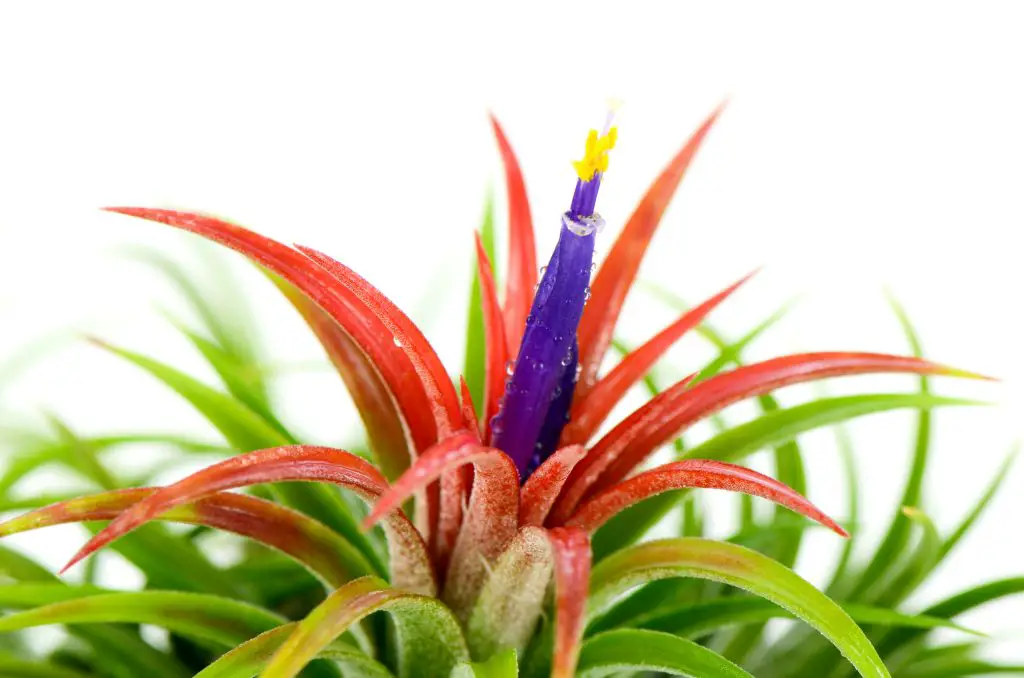
Why Are My Air Plants Getting Brown Spots?
Your air plants are getting brown spots due to any of the reasons stated below:
- Sunburn.
- Aging.
- Low light.
- Freezing.
- Toxins.
Sunburn
Sunburn is the main reason your air plant may get a brown spot. This usually happens when your air plant is getting so much direct sunlight.
Some types of plants, such as the mesic type, do not require direct sunlight, and you should keep some plants such as the xeric type under sunlight for 30 to 45 minutes. So proper knowledge of plants’ needs for sunlight can prevent your air plants from brown spots formation.
Natural Aging
Another reason for getting your air plant brown spots is again. This is quite natural when your air plant reaches its maximum maturity and completes its cycle of reproduction and blooming. Then, it starts dying, and the formation of the brown spot is one of its main symptoms.
Low Light
The low light can also be a reason for appearing brown spots on the air plants. For example, if you are watering correctly and supplying all the nutrients to the plants, but the plant growth is not good, it shows the brown or black spots on the tips of the plant the reason could be low light.
And further low light can lead to the turning of your complete green air plant into the black-colored plant.
Freezing
When you keep your air plants in cold areas, such as in areas of the home close to windows in the wintertime, you may notice your air plant begin to freeze.
And the brown spots show the sign of a rotting process that may appear in the form of brown spots on your air plants. For example, some air plants may even do under -2 Celsius temperature.
Toxins
The toxins present in the fertilizers can also be the valid reason behind the appearance of the brown spots on air plants. These toxins may include rust, copper, zinc, soaps, chlorine, weed killer, exhaust from the vehicles, insecticides, etc.
So the quality of water supply and soil are the essential factors for broadening plants.
How To Prevent an Air Plant From Turning Brown?
You can fix all the reasons causing your air plant leaf tips to turn brown.
- Using unchlorinated water or rainwater
- Provide your air plants enough water routinely
- Provide enough nutrients
Use of Chlorinated Water or Rainwater
Using unchlorinated water or rainwater can help your plant get rid of brown tips because chlorine is responsible for the opening and closing of stomata ensuring that the leaves are stiff.
You can use sodium, chloride fluoride, and even chlorine amine.
If your Air plant is turning red, however, here are some reasons why it’s happening.
Proper Watering
If the water content of your plants is alright with a weekly supply of adequate water, the air plants will grow better and prevent the air plant from turning brown.
During winter, watering once after every two weeks will be enough. You can do this by submerging your air plant in water for the whole night or at least for an hour.
Fertilizers
You can prevent brown air plants from missing nutrients by giving adequate fertilizer nutrients to your plants.
How Do You Revive A Brown Air Plant?
You can revive a brown air plant using these tips:
- First, give an overnight soak to your air plant.
- Next, make sure your air plant has air.
- Remove dead leaves.
Soak Your Air Plant Overnight
Soak your air plants overnight in a bowl. This will replenish the inadequacy of water that could be the reason for brown air plants.
Make Sure Your Air Plant Has Air
If your air plants are kept somewhere with poor air circulation, consider shifting your plant to an airy place with good air circulation. This is better for reviving your air plants from being brown as the extra air circulation will supply enough oxygen to your plants.
Remove Dead Leaves
Trimming the edges and tips of your plant’s leaves nicely and carefully and removing dead leaves help revive your brown air plants.
See the roots and if they need trimming or not; they will grow back even if they get cut.
Conclusion
This article covers every aspect of information regarding what makes air plants turn brown, how you can prevent air plants from turning brown, and a few tricks on how you revive a brown air plant. Remember to keep them in optimal conditions, such as keeping the room temperature ambient and pleasant and enough fresh air.

